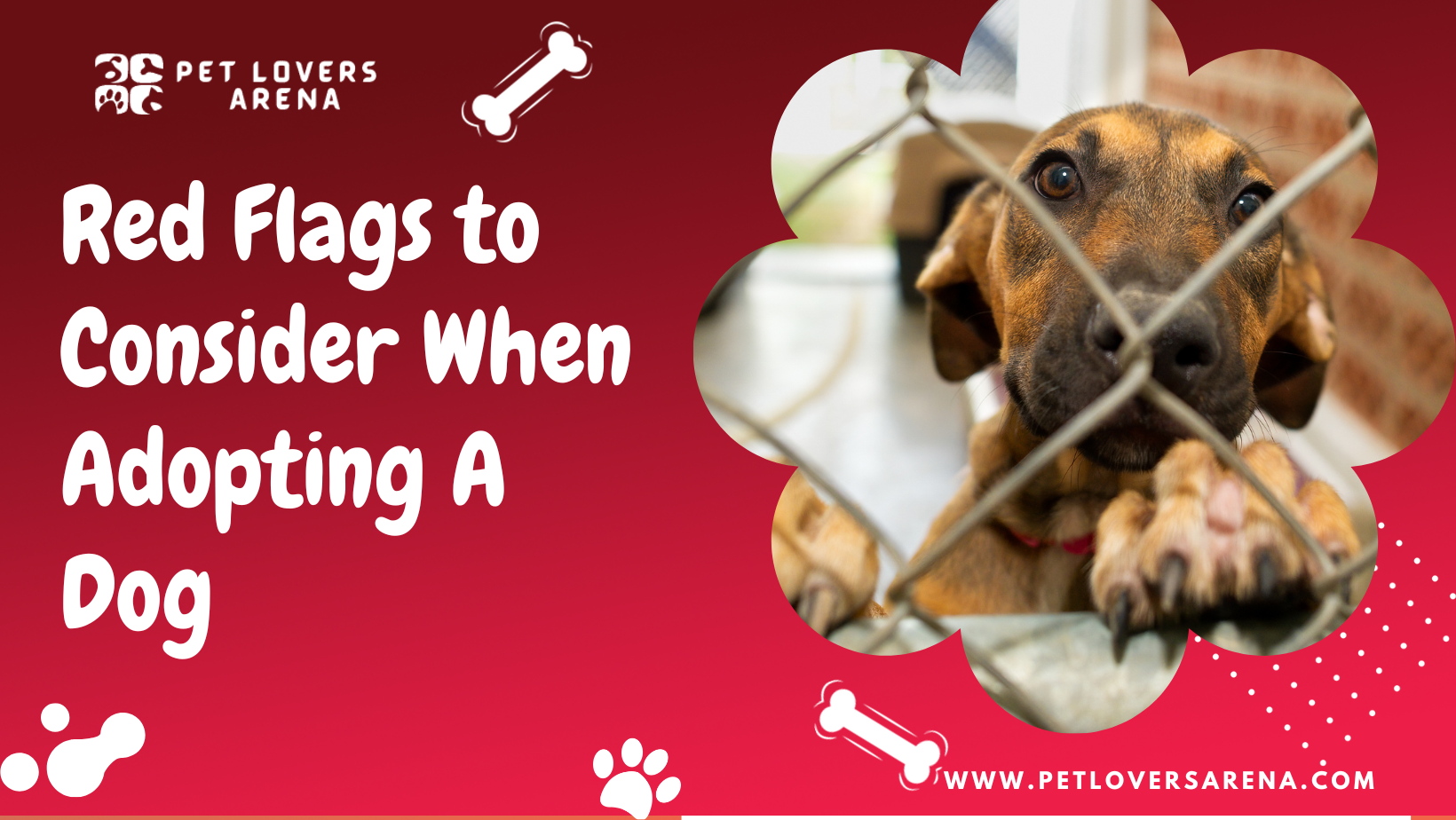Adopting a dog is a big decision that requires careful consideration and planning. While it can be an enriching experience, it’s important to be aware of the potential red flags that may arise when adopting a dog. These red flags can range from health issues to behavioral problems, and it’s crucial to recognize them before committing.
When adopting a dog, recognizing red flags is essential to ensure you find the right match for your lifestyle and needs. Some of the most common red flags to watch out for include shady shelters or rescues, carefully worded statements about behavior in ads, and limited or misleading information about the dog’s health and background.
Evaluating the dog’s health and assessing its behavior and temperament are also important factors to consider when adopting a dog. Ensuring the dog is healthy and free of underlying health issues requires ongoing care or treatment.
Additionally, assessing the dog’s behavior and temperament can help determine whether they match your lifestyle and environment.
Key Takeaways
- Recognizing red flags is crucial when adopting a dog.
- Evaluating the dog’s health and behavior is essential to find the right match.
- Professional assistance and guidance can ensure a successful adoption process.
Red Flags to Consider
It’s important to avoid making assumptions regarding the behavior and nature of all dogs being the same. Each breed has its own unique characteristics, and each dog has its own personality.
Rushing for adoption without considering the compatibility with your lifestyle and environment may lead to an unsuccessful adoption and a poor experience for you and the dog. Here are some red flags to look out for:
1. Behavioral Issues

Behavioral issues are among the most common red flags when adopting a dog. If a dog has a history of aggression, excessive barking, destructive behavior, or fearful behavior, it may not be the best fit for your home. While training and behavior modification can address some issues, others may require more intensive intervention. The things you need to keep in mind are:
- A dog’s temperament refers to its personality traits and reactions to situations. Some dogs are naturally laid-back and easygoing, while others may be more high-strung or anxious.
- It’s essential to look for signs of stress, anxiety, fear, or nervousness, such as excessive growling or barking, non-reciprocating behavior, or staying hidden. A comfortable and relaxed dog is more likely to be a good match for your household.
- Separation anxiety is a common behavioral problem in dogs that can cause them to become destructive or anxious when left alone. It’s vital to assess a dog’s behavior when they are separated from their previous owner or other dogs, as this can give you an idea of how they will react to being left alone in your home.
- When assessing a dog’s behavior and temperament, it’s important to do so neutrally and knowledgeably. Don’t make exaggerated or false claims about a dog’s behavior. Be sure to observe them in various situations to get a well-rounded understanding of their personality and behavior.
2. Lack of Socialization
Dogs not adequately socialized may exhibit fearful or aggressive behavior in new situations or around unfamiliar people or animals. A dog must be exposed to various experiences and environments to adjust to life in a new home. Here are some points to consider when adopting a dog:
- Different breeds have different needs and require other exercise, training, and socialization levels. For example, a high-energy breed like a Border Collie may not be a good fit for someone who lives in a small apartment and works long hours.
- The age of the dog can also be an important factor to consider. Puppies require much time, attention, and training, while older dogs may have already been trained and socialized.
- Meeting the dog in person is important before making a final decision. This will allow you to observe the dog’s behavior and personality and see if they fit your family and lifestyle well.
3. Health Problems

When adopting a dog, it’s important to be aware of any health problems or medical issues that may require ongoing care or treatment. Dogs with chronic health conditions may require more time, attention, and resources than you can provide. Things you need to take care of:
- Ask to see the dog’s medical records. This will give you an idea of the dog’s overall health and past health issues. Look for recurring health problems or chronic conditions requiring ongoing treatment.
- Pay attention to signs of health issues such as coughing, vomiting, diarrhea, or weight loss. These can be signs of underlying health problems that may require medical attention.
- If the dog appears sick or lethargic, it may indicate illness. Look for any discharge from the eyes, nose, or other signs of disease. If you suspect that the dog is sick, it is best to have a veterinarian examine the dog before adopting it.
- Persistent coughing can indicate a respiratory infection or other health problems. If the dog is coughing, it is best to have a veterinarian examine it before adopting it.
- Vomiting and diarrhea can be signs of gastrointestinal problems or other health issues. If the dog is experiencing these symptoms, it is best to have a veterinarian examine the dog.
4. Shady Shelters or Rescues
When considering adopting a dog, it’s important to be cautious of questionable shelters and rescues. These organizations may provide limited or misleading information about the dog’s health and background, making it difficult to make an informed decision. Research and ask questions before committing to a particular dog or organization. Here are some points to consider:
- Knowing the dog’s background and previous owners can give you insight into the dog’s behavior and personality. If the dog was surrendered due to behavior issues, you should be prepared to work with a trainer or behaviorist to address those issues.
- If the dog was abandoned due to a change in the owner’s circumstances, you may have a better chance of a smooth transition into your home.
- Speaking with the dog’s previous owners or references is a good idea. They can provide valuable information about the dog’s behavior, likes and dislikes, and any special needs or quirks.
- It is also a good idea to speak with the shelter or rescue organization to understand the dog’s behavior and suitability for your home.
5. Incompatibility

Ultimately, the most important factor in adopting a dog is compatibility. If a dog’s energy level, temperament, or personality does not match your lifestyle and preferences, it may not be the best fit for your home. It’s important to be honest with yourself about what you are looking for in a companion animal and to choose a dog that meets those criteria.
Here are some points you need to consider when adopting a dog:
- When adopting a dog, it’s crucial to ensure its personality and energy level match your lifestyle and environment. This means considering factors such as your work schedule, living space, and family situation.
- If you have young children, choosing a dog known for being gentle and patient with kids is important. Breeds such as Golden Retrievers, Labrador Retrievers, and Beagles are known for their friendly and playful nature, making them great family pets.
- If you have a big yard or enjoy outdoor activities, consider adopting an energetic dog that requires plenty of exercise. Breeds such as Border Collies, Australian Shepherds, and Siberian Huskies are known for their high energy levels and love for outdoor activities.
- On the other hand, if you have a more laid-back lifestyle, consider adopting an older dog that is more relaxed and low maintenance. Older dogs are often already trained and maybe a better fit for someone who is inexperienced or becomes a first-time dog owner.
Professional Assistance and Guidance
When adopting a dog, seeking professional assistance and guidance is always recommended. This can come from a reputable adoption agency, a veterinarian, or an experienced dog owner. These professionals can provide valuable information and advice to help you make informed decisions about dog adoption.
One of the first things you should do when adopting a dog is to have them microchipped. A microchip is a small device implanted under the dog’s skin and contains medical information and contact details. This can be extremely helpful if your dog gets lost or runs away.
Ensuring the dog has received all necessary vaccinations is also important. This can help prevent the spread of diseases and keep your dog healthy. Your veterinarian can provide you with a vaccination schedule and answer any questions you may have.
When adopting a dog, it is important to have access to their medical information. This can include any previous health issues, medications, and vaccinations. This information can help you make informed decisions about their care and ensure that they receive the appropriate treatment if needed.
Experienced dog owners can also provide valuable guidance when adopting a dog. They can offer advice on training, socialization, and general care. It can be helpful to seek out a mentor or join a local dog group to connect with other dog owners and learn from their experiences.
FAQ’s
When adopting a dog, asking questions about its medical history, behavior, and background is important. Some questions to consider asking include: What is the dog’s history? Has the dog been evaluated for any medical or behavioral issues? What is the dog’s personality like? What kind of training has the dog had? What kind of food and exercise does the dog need? What is the adoption fee, and what does it cover?
When adopting a dog from a shelter, it is important to research, ask questions, and be patient. Look for a shelter that is clean, well-organized, and staffed by knowledgeable and compassionate professionals. Take your time getting to know the dogs, and don’t rush into a decision. Consider your lifestyle, living situation, and family members when choosing a dog. Be prepared to provide plenty of love, patience, and training.
When adopting a dog, avoiding impulsive decisions, unrealistic expectations, and unscrupulous breeders or sellers is important. Avoid adopting a dog on a whim or without doing your research. Expect a new dog to fit into your lifestyle or routine after some time. Avoid breeders or sellers who prioritize profit over the well-being of their animals, and be wary of scams or fraudulent practices.
Conclusion
When adopting a dog, it’s important to look for red flags that may indicate potential issues with the dog’s health or behavior. By researching, asking the right questions, and being observant, you can increase your chances of finding a dog that matches your lifestyle and personality.
Remember that adopting a dog is a big responsibility, and it’s essential to take the time to find the right match for your lifestyle and personality. By being aware of red flags and addressing them, you can increase your chances of finding a loving and loyal companion for years.
Meet Fabian Wright, our guide into the animal realm at PetLoversArena.com. Having served as an Animal Care Specialist for the Ruwenzori Team at the Kansas City Zoo, he prioritizes conserving exotic species by replicating their habitats. Fabian aspires to share captivating stories of creatures, big and small, through PetLoversArena.com.

